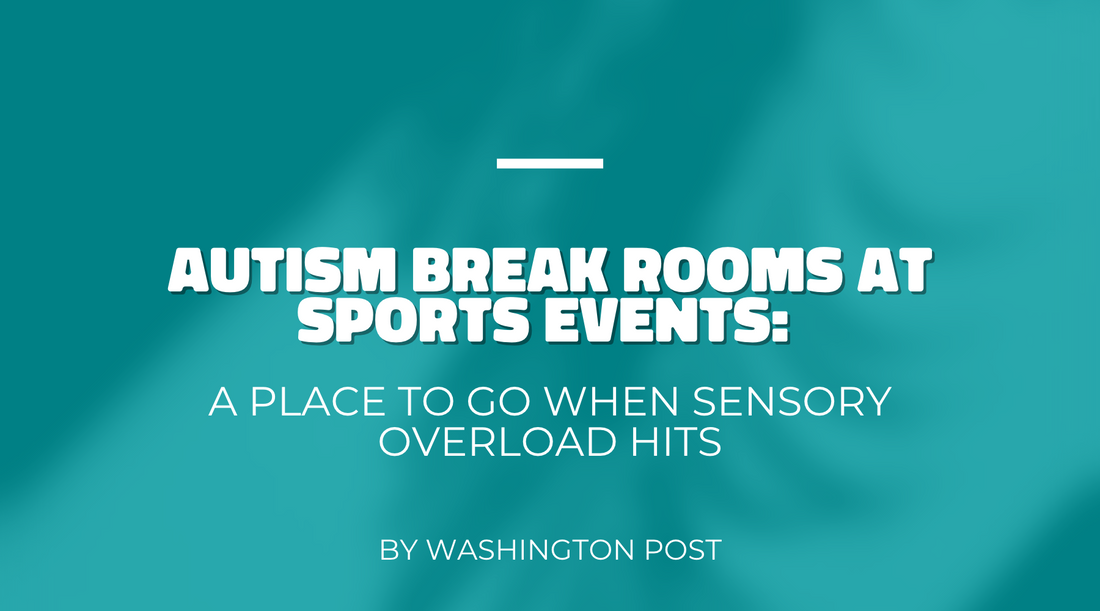But the O’Donnells found out that their oldest child, Declan, 8, was autistic when he was about 4. When they took him to games, he struggled to sit still and seemed bothered by the noise and chaos that go with big-time college basketball.
“He needed a sensory break,” Erin O’Donnell said. “We were just throwing snacks at him to try and get through the game, and we barely made it to halftime. . . . It’s a lot of people and a lot of noise, and he didn’t do well in those situations.”
So the family was excited to check out the new autism break room at the school’s basketball facility when it opened Dec. 2. The room, a joint project of the athletic department and the university’s Kinney Center for Autism Education and Support, is designed to create a more inclusive experience for people with autism and their families. It includes noise-canceling headphones, bouncy balls, color-changing floor mats, bean bag chairs and weighted blankets. It provides an escape for people who are feeling overwhelmed by the crowd, the noises and the unpredictability of the game, allowing them to regroup. Kinney Center experts have also taught arena staff members how to support and interact with visitors who have disabilities.
“We have created a campus climate that is very open to including people with autism as friends, colleagues and individuals with meaning in the community,” said Joseph McCleery, executive director of academic programs at the Kinney Center. “This was an obvious next step for us.”
Jill Bodensteiner, the director of athletics at St. Joseph’s, wanted to integrate the university’s work at the Kinney Center with the athletic program to create a more inclusive environment at sports events. She liked the idea of the break rooms that pro teams were creating, and she approached the Kinney Center to find out how it could do something similar.
As autism diagnosis rates have increased in recent years (currently affecting one in 59 children, according to the Centers for Disease Control and Prevention), many professional sports teams, including the Philadelphia Eagles and the Utah Jazz, have opened similar spaces in their arenas.
“We’ve all become a little more sensitive, and, as a society, a little more educated about the desire and need to make events more accessible,” Bodensteiner said. “More and more families have kids with autism spectrum disorders. . . . We all know somebody who is affected, so what can we do, how can we help?”
The answer was to focus on what these customers might need to enjoy coming to a game. The staff has been trained to be compassionate and empathetic, and understand the needs of people with intellectual and developmental disabilities, Bodensteiner said. And the space is close to the court, which allows families to go back and forth from the game to the break room easily.
It’s also designed to suit adults on the autism spectrum, rather than being a play room specifically for children, McCleery said.
“We have a very large number of people aging from adolescence to adulthood who are on the spectrum,” he said. “And we have more higher-functioning individuals who want to be included in the community because of their intellectual and verbal abilities.” The space is designed to facilitate that, he said.
Zoe Gross, the director of operations for the Autistic Self-Advocacy Network, said in an email that she is happy that the space will serve people of all ages.
“Too often, people who are setting up this kind of quiet space unintentionally limit the positive impact they can have because they forget that adults can be autistic, and promote these kind of break rooms only as resources for parents with autistic children,” she wrote. “Having a designated quiet area to go to, where we can self-regulate with things like weighted blankets or fidget toys, can help autistic people access events that we might otherwise not be able to enjoy.”
Declan made it almost to halftime during the Dec. 2 game, his parents said, before visiting the break room. He gravitated to a large yellow ball, and within seconds was bouncing around and humming, a sign that he was releasing the stress of being overwhelmed, his parents said. He went back to the room near the end of the game for another break. It was a big improvement over past experiences, where either Erin or Kevin would have to hang out with Declan in a hallway outside an event while the other stayed inside with their younger children, ages 6 and 22 months.
“We want to be able to enjoy these types of situations or activities,” Erin said, “and organizations are starting to see that if they want families to come, and the tickets to sell, they need to start accommodating families with kids on the autism spectrum.”
By Mari-Jane Williams
Article From:
Washington Post

